Step 1: Anticipation
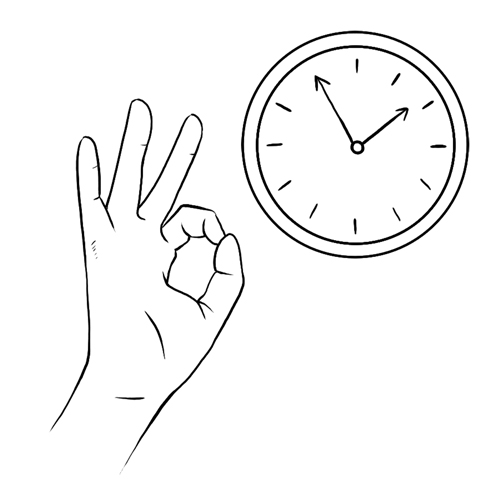
|
See the full description here
Summary:
Collaborate and form a team with your child. When you invest the time to form a strong team, children feel more comfortable and less anxious – this will help you complete the care with less stress – for you and your child.
Use these tips, from the start, to set the stage for a positive care procedure:
- Create the right moment: integrate the care in a routine.
- Alert your child to the needed care and communicate together.
- Form a team with your child: Encourage autonomy by offering realistic choices such as the method of distraction. Stay tuned to your child. Manage pain and anxiety, using distraction and positioning for comfort.
|
|
Step 2: Preparation
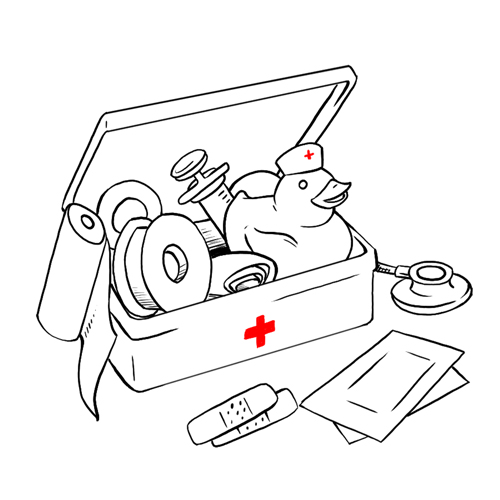
|
See the full description here
Summary:
- Prepare the environment: Identify a routine place for care. Close windows, doors and fans. Wash and dry the work surface and gather the needed materials for the care and to distract your child.
- Prepare your child: Get help if needed. Position your child for comfort to receive the care and start to use the selected distraction method.
- Prepare yourself: Find the right time when you are ready to provide the care safely. Review the list of care steps. Wash your hands.
Now that you are ready to start the care procedure, take the opportunity to encourage and praise your child.
|
|
Step 3: Procedure

|
See the full description here
Summary 3 key concepts:
- Safety: Carefully follow the care practice steps as you have been taught.
- Flexibility: Be ready to adjust according to your child’s reactions during the procedure. As needed, reposition or select an alternative distraction strategy. Follow your child’s pace and rhythm.
- Collaboration: Reassure your child, verbally and non-verbally. Acknowledge your child’s emotions and reactions. Help your child differentiate between the different sensations during a procedure.
|
|
Step 4: Prepare the equipment
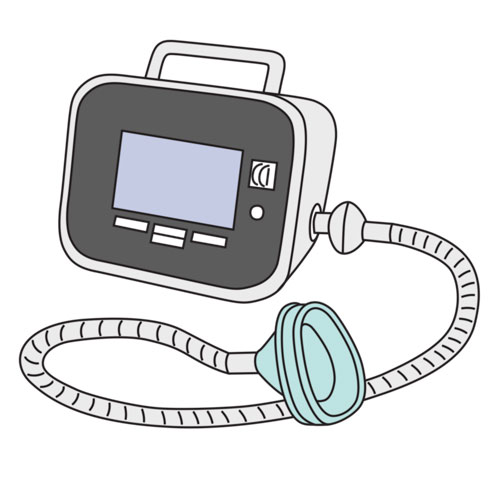
|
- Use a properly cleaned table.
- Gather the necessary supplies
- Make sure that the equipment is clean and properly assembled: ensure that the tubing, antibacterial filter are connected to the device.
- Verify the state of the interface.
- Connect the interface (mask or mouthpiece) to the in-exsufflator tubing.
- Verify that all the parts are properly assembled and adjusted.
Why ? This step ensures proper assembly of the equipment.
|
|
Step 5: Position your child

|
- Place your child if possible, in a sitting or semi sitting position.
- The technique can also be applied with your child lying on his back.
- Make sure that your child’s head is well positioned and supported by using either rolled up towels, pillows, or cushions, as discussed with the healthcare team.
- If your child is in a wheelchair, apply the brakes.
Why ? A sitting position optimizes coughing.
|
|
Step 6: If possible, establish a signal with your child
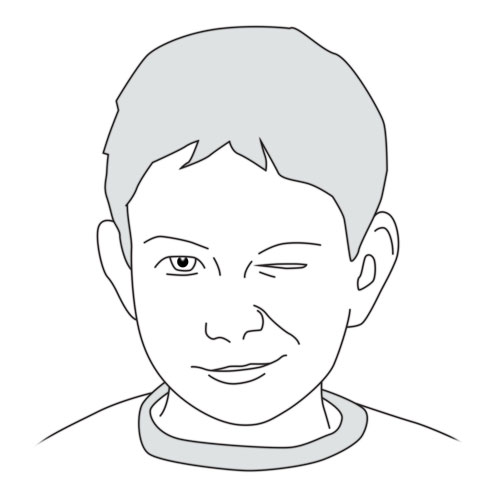
|
- If your child’s capacity permits collaboration, establish a signal with your child to indicate when your child feels that his lungs are filled to full capacity and that he is ready to exhale and cough (eg, a wink, bending of head to one side, raising a hand).
- Respect this signal at all times during the technique.
Why ? This step ensures that the technique will be safely applied and encourages teamwork with your child.
|
|
Step 7: Turn the in-exsufflator device on
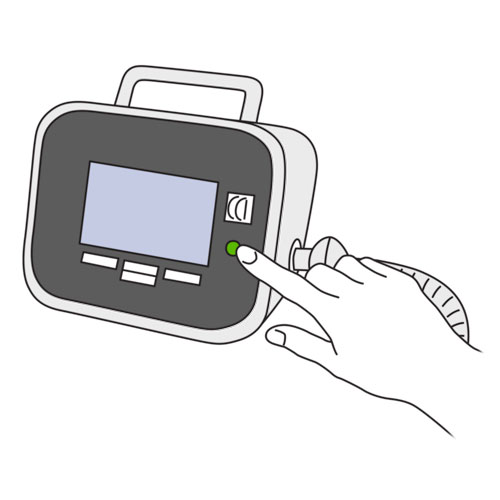
|
- Refer to the manufacturer’s guide for information regarding how to turn the device on depending on the model used by your child.
- Make sure that the pressures are adjusted as prescribed.
Why ? This step allows for the procedure to continue.
|
|
Step 8: Install the interface
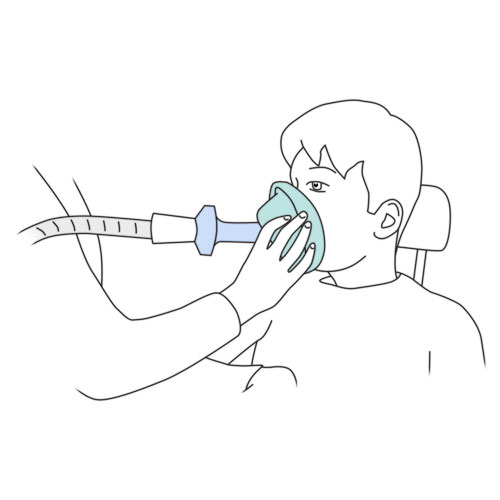
|
- Tracheal cannula: attach the tubing adapter to the tracheal cannula.
- Mouthpiece: insert the mouthpiece into your child’s mouth, making sure that your child’s lips are firmly sealed around it; use a nose clip if recommended by the healthcare team.
- Mask: place the mask over your child’s face, making sure to form a good seal with no leaks.
Why ? This step connects your child to the equipment.
The nose clip prevents air leaks through the nose when using a mouthpiece.
|
|
Step 9: Give the treatment

|
- Ask your child to relax and to allow the air to enter and leave his lungs without resistance.
- Allow the device to provide 3 to 5 maneuvers (1 inspiration/1expiration) to complete one cycle.
- According to the healthcare teams recommendations, apply abdominals thrusts, thoracic lateral or thoracic compressions during the expiratory phase only.
- You should observe your child’s thorax (chest) rise and fall during the treatment.
- During the treament, ask your child to cough during expiration to clear secretions unless the oscillation option is in use.
- If your child is very congested, stop the treatment, remove the interface and suction your child’s secretions before continuing.
- Use as many cycles as necessary to help your child clear the secretions (4-6).
- Remove the interface at the end of the treatment.
- Have your child spit out the secretions, wipe with paper tissues.
- Wait at least 10 minutes before beginning another session (4 to 6 cycles).
Why ? This step helps your child clear secretions.
|
|
Step 10: Suction secretions, as needed
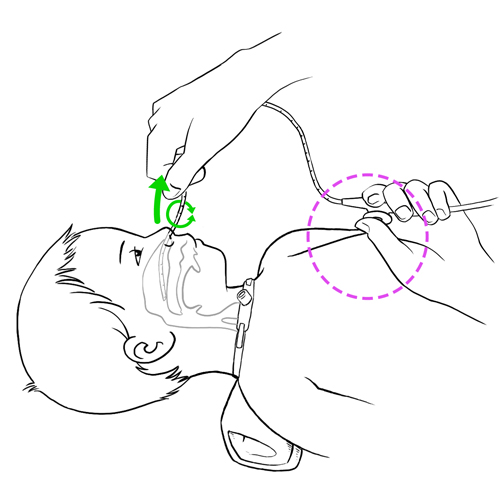
|
If your child has difficulty clearing secretions from the mouth, nose, back of throat or tracheal cannula, use suction to clear your child’s secretions.
Why ? This step helps clear secretions from the respiratory tract.
|
|
Step 11: Clean and store the equipment
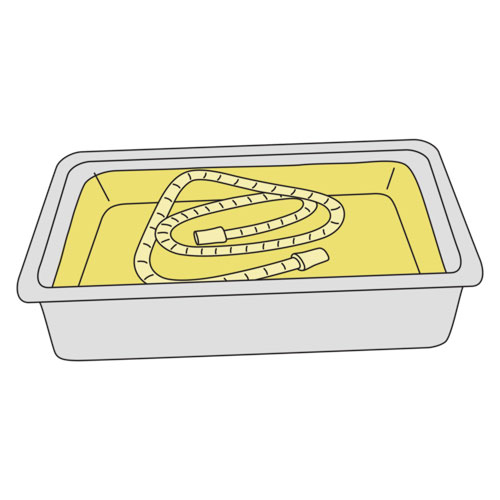
|
Cleaning tips.
- Mask, mouthpiece and nose clip, if needed:
- clean with soapy water;
- rinse in warm water;
- let dry;
- store in a clean container protected from dust until the next use.
- In-exsufflator device and components:
- clean the exterior of the device with a damp cloth and mild soap every week;
- antibacterial filter: change the filter every month or more often if it is soiled;
- other components (eg, tubing): clean according to the manufacturers or the healthcare team recommendations;
- store the device and its components clean according to the manufacturers or the healthcare team recommendations.
Why ? This step is required to prevent infections and maintain equipment.
|
|
Step 12: Recovery
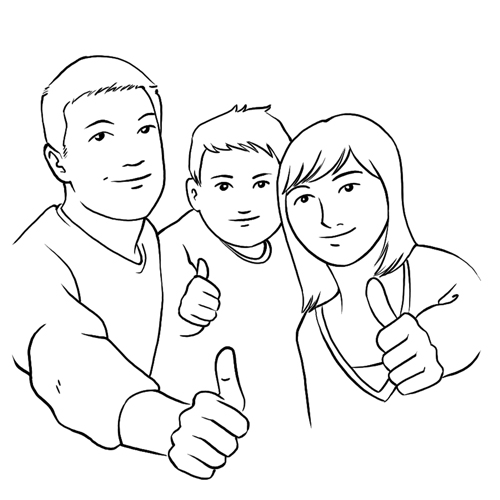
|
See the full description here
Summary:
The treatment is finished. Wash your hands again.
Be prepared to recognize the challenges faced and to provide positive feedback. Help your child recognize his/her strengths. Acknowledge the collaborative teamwork.
- Listen to what your child says about the parts of the procedure that were difficult or painful.
- Comfort your child and recognize your child’s collaboration with positive feedback.
- Highlight your child’s specific strengths that helped make the procedure positive.
- Discuss with your child what might be done the same or differently the next time the care is needed.
- Keep your promises if you have promised a reward, follow through.
- Reward yourself too.
|
|
![]()